| East Heaven Kingdom An Oirthir ar Neamh Ríocht | |
| Motto: de na Treo agus Tonn
(of the Winds and Wave) | |
| Anthem: If You Still Believe | |
| Geography | |
| - World | White Giant |
| - Continent | Paova Major |
| - Region | Great Almond |
| - Capital | Veluca |
| - Largest city | {{{Largest_city}}} |
| Official languages | Oirthir, Old Hermanian |
| Ethnic groups | {{{ethnic_group1_percentage}}}% {{{ethnic_group1}}} |
| Demonym | {{{demonym}}} |
| Government | Monarchy |
| - Serene Queen | Morgan na Colliete |
| - Grand Marshal | Iris de Hermantine |
| - Queen's Own | Princess Dawn na Colliete |
| - Chief Magistrate | Lord Samuel Riften |
| - Sacred Princess | Tallisibeth II na Colliete |
| Legislature | {{{legislature}}} |
| Events | |
| - Formation | November 2979 |
| Population | |
| - Total | 42,681,408 -East Heaven Kingdom
19,394,675 -Duchy of Radiata 10,974,228 -DUchy of Ellenjoy grace |
| Military | |
| - Active personnel | Classified |
| Organizations | |
| - Federation | The Union Federation |
| - Common Market | [[{{{cm}}}]] |
| - Empire | East Heaven Kingdom |
| Production | |
| - Total | SC${{{production_total}}} |
| - Per capita | SC${{{PPC}}} |
| Currency | {{{currency}}} |
| Internet TLD | {{{Internet_TLD}}} |
| Drives on the | {{{drives_on_the}}} |
| URL | [{{{url}}} East Heaven Kingdom] in Simcountry. |

Elsa Raven - If You Still Believe (With Lyrics)
East Heaven National Anthem
East Heaven Kingdom was a small kingdom located on the western part of the Paova Major continent. It was formed on November of 2979 at the end of generations of civil wars when the land was finally unified. Its capital is the city of Veluca. It is a place with strong military tradition and has a strict honor code.
East Heaven Kingdom was the successor to the Kingdom of Hermantine, who's capital was Il de Hermantine. It possessed one of the strongest armies in White Giant, and had been successful in every war it had entered until 3171. Known by the abbreviation EHK, it was well respected in the international community.
Government[]
East Heaven was a monarchy ruled by the Serene Queen. While the Serene Queen had absolute power, she was assisted by two main bodies of government: the House of Peerage and the House of Commons. Also to advise her was the Ministry, which was led by the Queen's Own. In the absence of the Serene Queen and if the Sacred Princess had not reached the age of majority, the Kingdom was ru
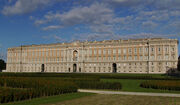
Royal Sapphire Palace, Veluca
led jointly by the House of Peerage, House of Commons, and the Ministry. The Queen's Own then became the guardian until the Sacred Princess came of age and was placed on the Sapphire Throne.
House of Peerage[]
The House of Peerage consisted of all of the nobility in East Heaven. It was headed by Council of Duchies. The house informed the Serene Queen of the state of affairs in their regions.

Parliament building, Veluca
Seven Duchies and Two Provinces[]
The Seven Duchies were so named because they were each cadet branches of Clan Colliete or House Selis of the Kingdom of Hermantine. The only one that wasn't a cadet branch is the Duchy of Colliete. In addition, two major provinces, Izumi and Jiangzhou, were added following the end of the Izumi-Jiangzhou War. The seven duchies were as followed with the name of the contemporary head of household.
- Duchy of Colliete: HRH Grand Duchess Gracie na Colliete
- Duchy of Mindelan: Duchess Keladry II na Mindelan
- Duchy of Hermantine: Duchess Hanma Selis V de Hermantine
- Duchy of El Nido: Duchess Schala na El Nido
- Duchy of Golden Lake: Duke John na Golden Lake
- Duchy of Radiata: Duchess Anna na Radiata
- Duchy of Dandiville: HRH Duchess Miakis na Dandiville
- Izumi Province: Lord Motonari noh Misaki
- Jiangzhou Province: Lady Dang Lum
House of Commons[]
The House of Commons was the body of government that represented the people. It was headed by the House Presider, who was elected by the people every four years. While the people did vote for their Chancellor, the Chancellor had to be confirmed by Serene Queen before the office was considered occupied.
The names of the contemporary elected leaders of the House of Commons were as follows:
- Chancellor: Roggi Riokicson
- Vice-Chancellor: Joffery Kastal
- Speaker of the House: Saraneth Nevin
At the time, there were three known major political parties: The Republican Party, the Reformed Country's Party, and the Free Workers Party.
Ministry[]
The Ministry's duties were to assist the reigning monarch with the infrastructure of the Kingdom. Each department was headed by a minister and a vice-minister. The ministers were chosen by the Serene Queen from amongst the population and confirmed by both the House of Peerage and the House of Commons, with the exception of the Vice-Minister of Defense which was held by the Grand Marshal. They met on the 1st and 15th of every month with the monarch and also reported their findings to the House of Peerage and the House of Commons.
The ministries were as follows:
- Ministry of Commerce- Patrick na hAbhann
- Ministry of Defense- Alexander na Sléibhte
- Ministry of Transportation-
- Ministry of Foreign Affairs- Sophia na Réalt
- Ministry of Internal Affairs-
Monarchy[]
Main article: Royal Family
East Heaven was ruled by an absolute monarchy that is assisted by the aformentioned Houses. The Serene Queen in the year 3171, the start of the Union-Pegersian War, was Morgan na Colliete.
Clan na Colliete resided in Castle Colliete, located in the port city of Veluca. During the reign of House Selis, the clan was elevated from a county to a duchy for its services to the Royal Court. After House Selis' fall from power, Clan na Colliete consolidated their power and gained the alliance of both Clan na Mindelan and Clan na Dandiville. When they reunited the land, it was changed to East Heaven and they were given the gift of the royal sword "Cherry Blossom Princess" in trust. Combined with na Colliete's own Emerald Star Jewel, makes up the Crown Jewels of East Heaven and were presented to each new monarch when crowned. These items were evacuated to Aquitania during the end stages of the Union-Pegersian War. Another item was the Royal Command Sword "Claíomh Solas". During times of war, this sword was given to the person chosen to take command of the Ríoga na Fórsaí Armtha as Grand Marshal, it was lost during the Union-Pegersian War.
The reigning monarch ruled from the Sapphire Place, which was a part of the "Gemstone Palace" project funded by former Serene Queen Elspeth I Selis of Hermantine during her reign. Both palaces were bombed in the year 3173 and subsequently demolished by Pegersian occupation forces.
History[]
For history of the former Kingdom of Hermantine, see here.
War of Unification (2910-2979)[]
The War of Unification, or the Clan Wars, was a series of battles and skirmishes that resulted in Clan na Colliete unifying the land and forming the East Heaven Kingdom. The war began with the destruction of Clan na mór Tiarna, which was the most powerful clan at the time. At the time, Clan na mór Tiarna was maintaining an uneasy peace between two great clans: Clan na mór Bás and Clan na Colliete. Whilst Clan na Colliete was maintaining a peaceful relationship with Clan na mór Tiarna, Clan na mór Bás had been noted for its many unwarranted skirmishes with the various nearby clans as well as oppressing its subordinate clans. On April 20, 2910, clan head Tobais na mór Tiarna, his wife, and three sons were brutally murdered in their estate by members of Clan na mór Bás. Clan head Reamus na mór Bás then declared himself the head of all the clans.
Battle of Bans Head (Jun 19, 2910-Jun 20, 2910)[]
A two-day battle between Clan na Colliete and the survivors of Clan na mór Tiarna, and Clan na mór Bás. It began at 0825 local time while survivors of Clan na mór Tiarna, now led by Connor na mór Tiarna, attempted to flee their fief towards fiefs held by one of Clan na Colliete's allies. At 0940 local time, they were joined by troops from Clan na Mindelan, who were to act as escorts. At 1100 local time, they were passing thru Bans Head, a large hill overlooking somemarshlands located north of the city of Monteron, when forces of Clan na mór Bás ambushed the recon element of Clan na Mindelan, believing it to be the main force of Mindelan escorts. This allowed the remaining units to retire to Bans Head, fortify it, and send a request for reinforcements to Veluca. At 1400, a general attack was ordered on Bans Head. For four hours, fierce fighting was reported throughout the Mindelan/mór Tiarna lines. Though the lines did bend, there no reports of the line breaking. At 1800, reinforcements from Veluca arrived to strengthen the lines. Clan na mór Bás attempted once again to take Bans Head, but couldn't breach the lines. They retired to their 1100 starting point and waited until morning to recomence hostilities. During the night, Clan na Colliete launched a surprise night attack on Clan na mór Bás. During the attack, the commander of Clan na mór Bás forces, Balin na mór Bás, was killed. Without their leader, Clan na mór Bás was forced to withdraw from Bans Head in defeat. The direct result of this battle is that Clan na Dandiville official joined with Clan na Colliete.
The Expansionist Age (2979-2892)[]
At the suggestion of her First Minister, the Sacred Princess ordered Grand Marshall Keladry of Mindelan to mobilize the Ríoga na Fórsaí Armtha to take back some of the hereditary lands once ruled by East Heaven. In the span of two years, Keladry of Mindelan was able to take back both the Duchy of El Nido and the Duchy of Radiata. With these successful conquests, the Ríoga na Fórsaí Armtha began its stand down period to allow the kingdom time to recover from campaigns.
Duchy of Radiata[]
An independent duchy, Radiata is the northern most territory of East Heaven Kingdom. After the fall of Hermantine, Radiata became besieged by militia groups attempting to gain control of the duchy. After hearing about the militia groups, Radiata's military force (Radiata Knight Guard) was reinforced by the Ríoga na Fórsaí Armtha, which began a devastating air campaign followed by the landing of the 1st Motor Rifle Division. With East Heaven's assistance, the Duchy of Radiata became secure once again.
Dandiville Rebellion (2979-2982)[]
The Duchy of Dandiville, which was subjucated during the reunification, initiated a rebellion. Taken by surprise, the eastern area, including Fort Hancock, has been occupied. It's leader, Duke Balin na Dandiville, cited that na Colliete has weakened the country allowing foreigners into the country. Taking control of the Dandiville Guard and forming various militia groups, he has begun a guerrila war.
The Duchy of Dandiville Guards was able to hold back both the Duchy of Selona and the Duchy of Hermania Alba's Guards in a pitch battle. Dandiville forces were themselves pushed back with the arrival of the First Motor Rifle Division. General Hannibal of Kelton has defected to the Duchy of Dandiville and was given command of the duchy's military forces. In response, Marshall Keladry of Mindelan has taken command of the 1st Motor Rifle Division and is marching to engage General Hannibal.
After a series of stunning victories, General Hannibal of Kelton was defeated by Celistia na Hermernia Alba, a direct decendant to Hermantine Royal Family, while approaching the capital city Veluca. During his withdrawal back to Dandiville-control areas, His forces were then attack by troops under command of Grand Marshall Keladry of Mindelan, resulting in his death. Afterwards, Fort Hancock surrendered to royal forces and the duke of Dandiville flees, leaving behind his entire family. It is rumored that he and his remnant forces are making their way to the Lusitanian Confederation to continue to his war.
The Rise of the Nyx Revolutionary Movement[]
Formed January 3005, they were said to be behind a number of attacks on government officials, including the Sacred Princess's assassination attempt. Naming themselves after the God of Death, they see themselves as missionaries to the god Nyx.
East Heaven-Ellenjoy grace War(2985-2989)[]
An armed conflict between the East Heaven Kingdom and the Kingdom of Ellenjoy grace. It was caused by a border dispute between the Kingdom of Ellenjoy grace and East Heaven's Duchy of Radiata, with Duchess Bethany na Radiata formally requesting military assistance from the Ríoga na Fórsaí Armtha. On the orders of Sacred Princess Sefar na Colliete, Grand Marshal Keladry of Mindelan mobilized the 1st, 2nd, 3rd, and 4th Motor Rifle Divisions, the Sanyu Ranger Team 4, and the Royal Lanseal Infantry Division, with General Marshal Wildon of Calvell as overall commanding officer. They were supported by the Ríoga ar Neamh Cabhlach EHS Kagutsuchi and the 181st Fighter Wing of the Ríoga ar Neamh Aeir Grúpa. The war lasted for 4 days with a complete victory for East Heaven.
Izumi-Jiangzhou War(3000-3020)[]
The death of a Yamani at the hands of a Xianese has sparked a civil war between the Misaki Clan-led Izumi Province and the Seung Clan-led Jaingzhou Province, with both sides vowing to destroy each other. Initial clashes between the two has left 36 dead and over 100 wounded. Grand Marshal Wyldon of Clavall has warned both sides that if they do not end the bloodshed, he will use his powers as Grand Marshal to bring a "painful and bloodied end" to the conflict. Until authorized by the Sacred Princess, police and local militia are the only ones who can operate against both provinces.
Battle of Kagoshima Town[]
In the early morning of March 1, 3038, Jiangzhou forces, led by the Veteran General Rei Lei, began an assault on the fortified town of Kagoshima. The town was protected by General Omashu noh Kitsuhige, a general who made a name for himself during the Dandiville Rebellion. The battle opened up with an artillery barrage from Jiangzhou forces, which caused widespread damage to the town. It was then followed by an infantry attack. The battle ended in a cease-fire by the arrival of Clan Mindelan's 17th Mechanized Battalion. A total of 124 soldiers on both sides were killed, with 700 wounded. A total of 53 civilians were killed and about 2000 were wounded.
Massacre of Mai Castle[]
In response to the attack on Kagoshima Town, Yosho noh Misaki sent on of his skilled generals, Dojima Ayanami, to take the border fort of Mai Castle. Mai Castle was defended by Cai Fu, a corrupt politician who wanted to use the war to raise his status. Cai Fu commanded only 120 untrained men and had at his disposal 8 badly maintained cannons, while General Ayanami commands a mechanized force of 1000 men, with tanks and artillery batteries. Though unknown as to what transpired during the battle, Cai Fu and all of his men lost their lives and Mai Castle was badly damaged.
Battle of Golan Heights[]
This was a battle fought between Ríoga Mílíste 20th Mechanized Brigade and Veteran General Rei Lei's newly formed 6th Jiangzhou Guard. It was fought near Golan Heights, an area located near the border town of Kagoshima. The battle ended inconclusively on both sides but is considered a strategic victory for the Ríoga Mílíste as their task was to keep each sides from coming into military contact with each other.
Era of Cold War (3040-3100)[]
While not in a state of war with The Republic Of Nicosia, East Heaven Kingdom has entered into a cold war. Under the command of Grand Marshal Mitsumi noh Kasemioji, the Ríoga na Fórsaí Armtha has begun a slight build up to prepare for any conflict.
Bombing of Strassburg[]
Due to the bombing that happened in allied Federal Republic of Aquitania, East Heaven made a rare move by deploying a second infantry regiment to provide security for its embassy.
Attack on Castle na Colliete[]
In the early morning of July 8, 3054, a group of unknown assailants launched an attack on Castle na Colliete. The duchy guards were caught by surprise and were initially pushed back. The assailants then entered the castle and entered into a gunfight with guardsmen of the Bhanda Rónaofa, who were guarding the Heavenly Princess Meru na Colliete, and the Princesses Serana na Colliete and Karita na Colliete. During the 30 minute gunfight, in which as many as 58 guardsmen lost their lives protecting the members of the Royal Family and Clan na Colliete, the duchy guards were able to return and push back the assailants. It is unknown how many were a part of the attack, but as many as 200 guardsmen from both the duchy guard and the Bhanda Rónaofa gave their lives in protecting the castle. The clan has been moved into the Sapphire Palace until further notice, and the Bhanda Rónaofa has launched an investigation to identify the attackers.
Assualt on the 3rd Mechanized Division[]
Our Country's Party members laid siege on the headquarters of the 3rd Mechanized Division. Caught by surprise, the 3d Mechanized Division suffered light losses before pushing back and ultimately routed Our Country Party's forces. This marks the first time a terrorist group has attacked a military unit in force.
The seizure of the EHS Grabac[]
The heavy command cruiser EHS Grabac was siezed by Our Country Party members while on-route to Aquitania. The heavy command cruiser was carrying a crew of over 200 sailors and officers, as well as 48 burst-air missiles and two complete squadrons of fighter planes.
War of the Woods (3076-3100)[]
On March 1, 3076, Sacred Princess Mint na Colliete authorized the Ríoga ar Neamh Airm to launch a punitive expedition into the Foraoise Breataine forest with the purpose of eleminating the "Our Country's Party" base of operation. The intial military to locate the base will be called Operation "Crainn ag titim" and will done by the Sanyu Rangers.
Battle of Caisleán de na Choillte[]
East Heaven forces begun a general engagement with "Our Country's Party" near the vicinty of Caisleán de na Choillte. Though the battle ended in a stalemate, East Heaven's forces were able to place the aging castle and its fortifications in a siege.
Schism of Our Country's Party[]
A rift occurred within the group "Our Country's Party" as a great deal of their members, wanting to peacefully make changes within East Heaven Kingdom, surrendered the ancient castle Caisleán de na Choillte to East Heaven military. This rift occurred after their leader, Iorik Magnusson, was killed by a sniper of the Team 3 of the Sanyu Rangers. The radicals, now led by Johan of Selona, have fled deeper into the forest. The Ríoga Feistithe Póilíní has been given the task of apprehending the remaining members.
Union Civil War (3098-3100)[]
Due to the activities of a group of rogue missile cruisers of Union member state Ardglass firing on Protectorate of Tuscany, thus triggering a war with the indenpendent duchies of both Radiata and the former Ellenjoy grace. After learning of this, East Heaven Kingdom join in the struggle as well. While initially holding back the Air attacks, missile units were able to destroy all forces deployed over East Heaven. Desperate for an end of the war, Grand Marshal Mitsumi noh Kasemioji ordered the commander of the Ríoga ar Neamh Ordaithe Straitéiseac to make a nuclear attack on a target in Ardglass. After that demostration, Ardglass immediately sued for peace at the cost of its own forces.
Era of Peaceful Tranquillity (3110-3171)[]
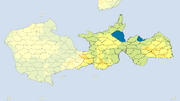
The East Heaven Kingdom at its Maximum Extent, 3100
With the destruction of the terrorist wing of "Our Country's Party" and Union Civil War over, East Heaven entered into a time of peace. While the peace was briefly shattered with the war threat from the federation "Bad Meets Evil", or BME. After peace was made, Sacred Princess Morgan na Colliete was petitioned to assume the title of Serene Queen.
Military[]
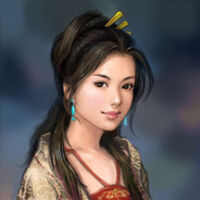
Grand Marshal-Ríoga na Fórsaí Armtha Iris of Hermantine
East Heaven's military, known as the Ríoga na Fórsaí Armtha, was the main fighting and defensive force of the kingdom. It was headed by the Grand Marshal, who would at times lead the army into battle. The Ríoga na Fórsaí Armtha had four main branches: The Ríoga ar Neamh Airm, based at the Royal Lanseal Base, which consisted of all offensive land units; The Ríoga ar Neamh Cabhlach, based off of the EHS Kagutsuchi, commanded all naval units; The Ríoga ar Neamh Aeir Grúpa, based out of the Royal Valencia Air Base, commanded all air units; and the Ríoga Mílíste based out of Fort Hancock commanded all defensive units. There were also a few lesser branches apart of the military. One was the Ríoga ar Neamh Ordaithe Straitéiseach, which was based out of Fort Dragonia. It commanded the nuclear arsenal of East Heaven. The other is the Ríoga nGarda Teorann Neamh, which protected all border crossing points. One of the main differences between the militia and the regular army was unit identification. A guard unit was classified as Guards Rifle. Only regular army used the term "Motor Rifle".
Ríoga ar Neamh Airm[]
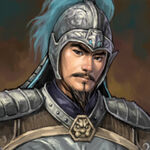
Great General-Ríoga ar Neamh Airm, General Marshal Rei Lei
It was the power behind the kingdom's military power. Utilizing rapid speed and the power of its armor units, they were sucessful in all engagements. The Ríoga ar Neamh Airm consisted in 3170 of six powerful motor rifle divisions, each with its own independent tank brigade and artillery regiment. This allowed each division to act independent during a war. The Ríoga ar Neamh Airm was led by the appointed Great General. In the Ríoga ar Neamh Airm, there were five different classification for foot soldiers: Scouts, Shock Troopers, Lancers, Medics, and Armour Techs. Scouts, as the name implies, were mainly used for recon and as skirmishers. They used long-range semi-automatic rifles and bolt-action sniper rifles. The Shock Troopers, or Troopers for short, were the backbone of the infantry force. They utilized medium-range semi- and fully- automatic weapons, as well as flamethrowers to use against strongpoints. Lancers were anti-tank infantry. They were so named because they used the M-207 anti-tank lance missile. Medics were lightly armed soldiers trained in battlefield medical practices, and thus handled all injuries until the wounded were transported to a hospital. Armour Techs, or engineers as they were sometimes called, handled fortifications and explosives. They also were drivers of light infantry vehicles, and used pistols and submachine guns. In the Ríoga ar Neamh Airm, there were five basic unit classifications: platoon, company, regiment, brigade, and division. Each had a set number of personnel assigned to them (excluding officers). The only exception to that rule were battalions, which were considered irregulars, artillery regiments, and tank bridages which were considerably less due to their armor capability.
The personnel numbers were as follows (ca 3171):
- Division: 25,000 to 50,000
- Brigade: 5000 men
- Battalion: 500-2500 men
- Regiment: 1000 men
- Company: 100 men
- Platoon: 20 men
Mainland East Heaven Forces[]
The military force of East Heaven, these were the units responsible for most offensive operations carried out by the Kingdom. Skilled in armored assualts and artillery support. Persons leading in 3171:
- Great General Ríoga ar Neamh Airm: General Marshal Rei Lei
- Aide-de-Camp: Colonel Gregory of Andtells
- First Motor Rifle Division: Lt. General Keladry II na Mindelan commanding
- 1st Motor Rifle Brigade
- 2nd Motor Rifle Brigade
- 3rd Motor Rifle Brigade
- 338th Independent Tank Brigade
- 77th Artillery Regiment
- Second Motor Rifle Division: Lt. General Tomoya noh Tachibana commanding
- 1st Motor Rifle Brigade
- 2nd Motor Rifle Brigade
- 3rd Motor Rifle Brigade
- 13th Independent Tank Brigade
- 165th Artillery Regiment
- Third Motor Rifle Division: Lt. General Marcy of Guldove commanding
- 1st Motor Rifle Brigade
- 2nd Motor Rifle Brigade
- 3rd Motor Rifle Brigade
- 7th Independent Tank Brigade
- 88th Artillery Regiment
- Fourth Motor Rifle Division: Lt. General Sakura noh Kasemioji, 3rd Countess of Kasemioji and Duchess of Friesland commanding
- 1st Motor Rifle Brigade
- 2nd Motor Rifle Brigade
- 3rd Motor Rifle Brigade
- 54th Independent Tank Brigade
- 96th Artillery Regiment
- Fifth Motor Rifle Division: Major General Bridgitte Hammerhelm commanding at the time inactive
- 1st Motor Rifle Brigade
- 2nd Motor Rifle Brigade
- 3rd Motor Rifle Brigade
- 55th Independent Tank Brigade
- 108th Artillery Regiment
- Sixth Motor Rifle Division: Major General Sui Leixia commanding at the time inactive
- 1st Motor Rifle Brigade
- 2nd Motor Rifle Brigade
- 3rd Motor Rifle Brigade
- 28th Independent Tank Brigade
- 107th Artillery Regiment
Duchy of Radiata Forces[]
The military power of the Duchy of Radiata. Known as the Radiata Knights, they were designed for defensive combat and rapid movement. Boasted the strongest armored cavalry force in East Heaven. Persons leading in 3171:
Commander-Radiata Knights: Knight-Commander Ser Issac mac Harper commanding
- First Radiata Motor Rifle Division
Grand Duchy of Imil Forces[]
The military force of the Grand Duchy of Imil. Known simply as The Guard, it was designed for light combat and rapid defense. Boasted one of the best light infantry forces in East Heaven.
Duchy of Hermantine Forces[]
A land-based military force that fought during the Third Great War. Skilled in mountain warfare but had limited naval combat skills. Persons leading in 3171:
Commander- Royal Hermantine Corps: Marshal Winry of Riften commanding
- Royal Hermantine Corps
- 18th Armoured Division
- 21st Motor Rifle Division
- 22nd Motor Rifle Division
- 23rd Motor Rifle Mountain Division
- 5th Coastal Defense Fleet
Duchy of El Nido Forces[]
A mixed infantry, armoured, and marine force of the island duchy. Depends on the navy to move around. Boasted the largest mounted force in the kingdom. (Note: El Nido was annexed by Lusitania in 3184). Persons leading in 3171:
Commander- Acacia Dragoons: Duchess Schala na El Nido commanding
- Acacia Dragoons
- 107th Armoured Dragoons
- 108th Armoured Dragoons
- 109th Armoured Dragoons
- 63rd Motor Rifle Division
- 64th Motor Rifle Division
- 8th Marine Dragoons
- 6th Coastal Defense Fleet
- 3rd Amphibious Fleet
Ríoga ar Neamh Cabhlach[]

Grand Admiral Natalia of Hearsten of the Ríoga ar Neamh Cabhlach
The naval arm of East Heaven. Based and commanded from its costal headquarters, it was used to protect East Heaven's interests on the open seas. With squadrons of destroyers, frigates, and cruisers, plus thirty Claudia-class battleships (including the flagships Sylvania, Urbanus, and Sylvius) made the Ríoga ar Neamh Cabhlach a deadly force to take on. One of the newest additions to the fleet was the EHS Aigaion and the EHS Grabac. Both were Agaion-class heavy command cruisers with strategic capibilities, as it was the the only class of warship to use the new burst-air missile codename "Nimbus Cloud". The Aigaion-class also had powerful point defense and anti-ship weaponry. Like the Claudia-class battleship, the heavy command cruiser was an aerial naval ship. The Claudia-Class Battleship Sylvania served as civil evacuation ship during the Union-Pegersian War and is the only suviving ship of its class. The Ríoga ar Neamh Cabhlach was lead by the appointed Grand Admiral. Persons leading in 3171:
- Commander- Ríoga ar Neamh Cabhlach: Grand Admiral Natalia of Hearsten
- Chief of Staff: Commander Davis Sinclair
- Commander-Task Force 57: Admiral Catherine na Hoven commanding
- Commander-EHS Kagutsuchi: Vice Admiral Ayane noh Kasemioji commanding
- Commander-EHS Kestral: Vice Admiral Miakis na Dandiville, 5th Duchess na Dandiville, commanding
- Commander-Task Force 58: Admiral Horatio de Rais commanding
- Commander-EHS Arc Angel: Rear Admiral Samuel de Valais commanding
- Commander-EHS Queen's Fury: Vice Admiral Ilse of Holden commanding
- Commander- EHS Aigaion: Rear Admiral Janus Forester commanding
- Commander-Royal Marine Corps: General Colonel Gregory of Velnius commanding
Ríoga ar Neamh Aeir Grúpa[]
The air force of East Heaven. Created because of the importance of air superiority, its air groups were well trained and motivated. Containing fighter squadrons, bomber groups, helicopter wings, and stealth bombers, it was able to support the ground force and maintain air supremacy with ease. Its strongest and most elite unit was the Royal 181st Fighter Wing, which had been in every war and conflict. It was lead by the appointed Sky Marshal.
- Commander-Ríoga ar Neamh Aeir Grúpa: Sky Marshal Iorik of Valorin
- Chief of Staff: Colonel Jak von Enlazerin
- Royal 181st Fighter Wing:
- Royal 8th Bomber Wing:
- Royal 177th Tactical Squadron:
- Air Defense Command:
Ríoga Mílíste[]
The militia of East Heaven. Aside from units defending cities and bases, it also commanded each of the mechanized brigades and the guards rifle divisions. It was lead by the General of the Guards, who's official rank was Guardian General. The militia was the last branch of the East Heaven Armed Forces to collapse, leading the resistance until 3183. Leading in 3183:
- Commander-Ríoga Mílíste: Guardian General Ser Pier of Lacott
Ríoga Ceannasaíochta Soláthair[]
The logistical arm of East Heaven, it commanded the supply units and air transport wings. It was heavily relied on by the army, air force, and militia.
Ríoga ar Neamh Ordaithe Straitéiseach[]
The strategic arm of East Heaven, the Ríoga ar Neamh Ordaithe Straitéiseach commanded all nuclear weapons at the order of the Sacred Princess. Aside from missile launchers, under the command of the 2nd Artillery Regiment, hidden around East Heaven, it commanded a bomber regiment (Ordú Aeir Straitéiseach) and fleet ballistic missile submarines (Ordú Mara Straitéiseach). Also falling under its command were the many anti-balistic missile commands that were around East Heaven. The failure of the anti-ballistic missile command system during the Pegersian attack in 3172 crippled the armed forces and resulted in millions of casualties in the initial wave of attack due to civil defence alarms failing to go off.
Special Forces[]
East Heaven's special forces, or Grúpa Oibríochtaí Speisialta, were the Kingdom's most highly trained forces. Each member was selected from various military units, and then were trained for 8 weeks. The main special operations unit were the secretive Sanyu Rangers and Drifter Squads.
Sanyu Rangers[]
A Special Forces group, the Sanyu Rangers were used to to go behind enemy lines and disrupt the enemy command and control ability. Any member of the Ríoga na Fórsaí Armtha could become members of the Sanyu Ranger, provided that they met all physical requirements.
History[]
The Sanyu Rangers began its history as a mercenary company. Though primarliy archers, the group became skilled at riding and sailing, as well as using a variety of weapons.
Drifters[]
These were a unique fighting group. Operating in groups of threes or fours, their duties were so black that they only reported to the Serene Queen and the Queen's Own. The Drifters were mainly used to hunt down war criminals that were not in East Heaven.
Military Intelligence[]
Military Intelligence was divided into three sections, each section performing different duties.
Section 1[]
Known as the Claymores, they were the para-military section of Military Intelligence. Highly motivated and well trained in CQC (close-quarters combat), they were sometimes used as a last resort before a military operation.
Section 2[]
Known as the Shields, they were used for foreign infomation gathering. Their ability to blend into their surroundings made them hard to spot.
Section 3[]
Known as the Scissors, they dealed with domestic issues. They were used to root out terrorists and rebels. Their ability to accomplish their goals without damaging the local areas made them popular among the commoners.
Public Intelligence Report[]
none
Military Orders of Knights[]
To help support the Ríoga na Fórsaí Armtha, Mitsumi noh Kasemioji had approved the creation of Military Orders by nobles. These groups would act as support for the main forces. In 3171, 5 such Military Orders existed.
- Order of the Eastern Woods
- Lionguard Knights
- Knights of the Mistic Vale
- Knights of the Northerns
- Knights of the Southern Sky
Space Program[]
Based at the Royal Diane Space Center was the Space Exploration Department, called the Spás Taiscéalaíochta Roinn. With two space shuttles, the Hermione and the Serenity, there was a rise in interstellar trade.
Neamh Spás Cabhlach[]
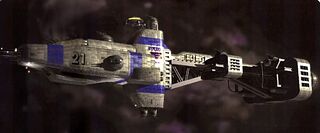
Invincible-class Battlecruiser
The space navy of East Heaven. Centered around three Invincible-class battlecruisers, the EHS Dewprism, Book of Cosmos, and Hermantine, its purpose was to defend East Heaven Kingdom from threats outside of the planet of White Giant. The battlecruisers main weaponry was their long-range turbocannons, which had the power to punch through most ship armors. The Invincible-class battlecruisers was designed for ship-to-ship combat. Since being formed, the space navy had increased its number of battlecruisers to 12 ships, each with at least one fighter squadron of 12 single-pilot ships with the max being 4 squadrons. The standard load-out was 2 fighter squadrons, 1 interceptor squadron, and 1 bomber squadron.
Invincible-class Battlecruiser[]
The Invinicible-class battlecruiser was a capital ship, designed to lead formations and to deal a great amount of damage. While not as large as an Aquitanian Savoy-class battlecruiser, it was equally deadly because of its weapon systems and its single-pilot ships.
Weapons Systems[]
- Four twin-barrel long-range turbocannons
- Anti-ship concussion torpedoes, 12 tubes
- Anti-fighter percussion missiles, 20 tubes
- Point-defense anti-fighter turrents, 40
- Two ion cannons
Shielding[]
The defense shields were projected by two Bhacainneach-class shield generators, which could withstand the equivalent of 3 Arbhach Breataine type ICBMs. Also, there was a magnetic shield over the hanger bay to prevent oxygen from escaping into space when fighters are launched.
Propulsion[]
The Invinicible-class was powered by 2 fusion generators, which in turn powered the three J-77 Event Horizon engines. This gave the battlecruiser its speed to out manuever larger ships.
Culture[]
The culture of East Heaven was strongly based on old Hermantine customs and beliefs. While most of the people spoke Oirthir, some spoke Hermanian. The inhabitants of the realm were referred to as the Ar phobal an Oirthir, or Oirthir for short.
Culture and Society of the Duchy of El Nido[]
El Nido, which is an island duchy, has a unique culture due to its strong ties to the sea. El Nido was the only territory that worships the Dragon Gods heavily, which naturaly put it at odds with the people of the Duchy of Hermantine. The is ruled by the Viper clan, which was a cadet branch of Serene Queen Hanma I's second daughter, Princess Dia of Ustio and bears the crest of the Azure Snake.
Culture and Society of the Duchy of Hermantine[]
The Duchy of Hermantine was a strict follower of the old Kingdom of Hermantine culture. This at times put them at odds with the rest of East Heaven, who were not strict followers. The duchy was ruled by the Selis clan, who were direct descendants to Serene Queen Hanma I of the Kingdom of Hermantine and beared the crest of the Twin Sparrows.
Culture and Society of the Duchy of Radiata[]
Due to it being an independent duchy, Radiata differed from the rest of East Heaven. Because the duchy was a primarily agricultural territory, it followed a more "rural" set of traditions, some of which were considered pagan by most oracles It was ruled by the Zenon clan, a cadet branch of the na Colliete clan and beared the crest of the Silver Dragon.
Culture and Society of the Duchy of Mindelan[]
Located in the southwestern region of East Heaven, the Duchy of Mindelan bordered the Foraoise Breataine forest. Due to this, it was known for its woodwork and had a strong carpentry guild. The duchy was also known for providing some of the best military commanders due to the fact that it was the host of the Royal Lanseal Military Academy. It was ruled by the Mindelan clan, who were cousins of the na Colliete clan and beared the crest of the Blue Griffin.
Culture and Society of the Duchy of Dandiville[]
Located on the eastern tip of East heaven, the Duchy of Dandiville was a well known industrial zone. It boasted having the most factories, and at one point was host to the Royal Armoury headquarters. Since the rebellion, it had rebuilt some of it's factories. It was ruled by the Dandiville clan and beared the crest of the Black Wolf.
Culture and Society of the Duchy of Golden Lake[]
A duchy that was famous for its wine, the Duchy of Golden Lake was located in the northwestern part of East Heaven. Golden Lake was also the host to the Royal Diane Space Center and acted as the headquarters for the Spás Taiscéalaíochta Roinn. It was ruled by the Malorie clan and beared the crest of the Golden Lion.
Culture and Society of the Duchy of Colliete[]
The ruling duchy of East Heaven Kingdom, it hosted the capital, the Royal Valencia Airbase, and the shipyards of East Heaven. Considered the richest duchy in the realm, it also boasted the largest population. The Duchy of Colliete was known for its fishing and shipbuilding industry. It was ruled by the na Colliete royal clan and beared the crest of the Emerald Dragon.
Culture and Society of the Izumi Province[]
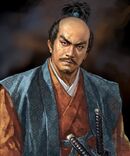
Yosho noh Misaki, Lord of Izumi
The Izumi Province was the home of the Yamani people. It's people spoke both Oirthir and Yamanese. It was based around the city of Izumi and was ruled by the Misaki Clan, which beared the crest of the four diamonds. The Izumi Provice was one of few lands in East Heaven that followed their own ancient customs and that were of a different ethnicity. The Yamanese are suspected to have disappeared entirely as a result of a genocidial campaign promoted by the occupying Pegersian forces.
Culture and Society of the Jiangzhou Province[]

Seung Wa-san, Governor of Jiangzhou
The Jiangzhou Province was the home of the Xian people. The main languages there were both Oithir and Xianese. The Povincial Capital was the city of Jiangling and was ruled by the Seung Clan, which beared the crest of the Blue Pheonix. It had a long standing feud with the Izumi Province.
Music[]
Considered an important past time of East Heaven. Like Hermantine, music in East Heaven was mainly played on string instruments, though some performers used wind or brass instruments. Some of the more famous performers were the pianist Gregory Daniels and the violinist Duchess Bridgett na Dandiville.
Sports[]
Physical activities were an important part of life in East Heaven. The national sport was archery, with boating and auto racing in close competition. Also emerging was the old sport of jousting, brought back to life by Clan Mindelan, who during the Middle Ages fielded one of the largest cavalry forces in the nation and were still famous for their horses.
Theatre[]
There were many theatre groups with their own buildings. While popular to visit, people prefered to visit the travelling troupes, such as the Neamh Aisteoirí Compántas, the Uisce Aisteoirí Compántas, and the Gaoth Aisteoirí Compántas. All theatre troupes recieved their blessings from the Great Oracle of the Goddess Lucia.
Religion[]
The East Heaven Kingdom still believed in the dieties worshipped by the Kingdom of Hermantine. There were many gods and goddesses that the people belived in. Most services were performed by priests and priestesses, though important and large-scale services were led by the Great Oracles. The Hermanian Pantheon:
- Mithros- God of war and justice
- Tatiana: Goddess of love and fertility
- Aura: Goddess of wisdom
- Nyx: God of death
- Lucia: Goddess of music and arts
- Talos: Dragon God of the Six Elements
- Wylaf: Dragon God of Knowledge
Another group that are worshiped are what were known as the Nine Temples. Each temple was lead by a sage, and were usually accompanied by people known as Guardians. Each temple was said to represent an aspect of life.
- Temple of Justice-Worshipped by law enforcement and lawyers.
- Temple of Courage-Worshipped by military personnel
- Temple of Faith-Worshipped by hospitals, hospices, and churches
- Temple of Wisdom-Worshipped by libraries and schools
- Temple of Honor-Worshipped by funeral homes of the honored dead
- Temple of Benevolence-Worshipped by traders and merchants
- Temple of Hope-Worshipped by children
- Temple of Friendship-Worshipped by musicians
- Temple of Serenity-Worshipped by sailors
Nobility Hierarcy[]
The noble titles of East Heaven that were used in formal and some informal social gatherings were as followed (in order of importance):
- Celestial Princess- A title only granted to deceased monarchs
- Serene Queen- Title used by the reigning monarch
- Sacred Princess- Former title used by the reigning monarch. Granted to the heir sometime after the Civil War.
- Heavenly Princess- Title granted to the third in line of the throne.
- Sacred Consort- Title given to the spouse of the monarch
- Princess/Prince-Title used by members of the reigning monarch's immediate family that was unmarried. It had been expanded to consist of those directly related to Celestial Princess Mint na Colliete in 3042.
- Grand Duke/Duchess-Title used by member of the monarch's extended family and children that were married and not the heir
- High King- The title of the ruler of the Northerners that was chosen by the Jarls. Equaled in power and respect of a Grand Duke.
- Duke/Duchess-Title granted to a trusted member of nobility. Only seven such positions existed, whos numbers do still include the Duchy na Colliete.
- Marquess/Marchionesse-Title given to regional leaders whos region had two or more counties.
- Count/Countess-Title given to people in charge of a county.
- Baron/Baroness-Title given to those who were awarded an estate by the crown.
- Jarl- A title used only by the lords and ladies of holds in the Northerns region of the Duchy of Hermantine.
- Knight/Lady Knight-Title given to military officers and administrators that had been knighted. Could be granted a Barony if proven to be loyal and honorable. Names were preceeded by Ser for males and Dame for females.
- Thane- The Northerns equivalence of a Knight. Names were preceded by Thane
- Lord/Lady- A noble without a title or estate
- Squire-Title given to knights-in-training. Held that title for four years before having to pass a test known as the Ordeal.
- Page-Title given to children undergoing the beginning four years of knight training.
Non-Nobility Titles[]
These titles were used by people that were not of gentry status, though it was possible for such people to gain gentry status. These titles were only used during formal functions and were placed before the person's name.
- Patrician: Highest non-noble title; became eligible for noble status
- Free Citizen: Title that gave political regard. These people were allowed to form corporations.
- Citizen: Title that grants full rights; persons who gained this title could run for any non-noble office positions and could expand their business into other cities.
- Citizen without Full Rights: Title given to those who gained their citizenship; however, they could not run for high-level office positions, and were allowed to start up a business in their home city.
- Yeoman: Title used by people attempting to become citizens.
Knighthood[]
All nobles and Patricians were eligible for knighthood. In East Heaven, a knight could be either an administrator or a frontline military officer. The process was eight years long, with the minimal age being 10 years old and the maximum being 14. The process was broken down into three steps: pagehood, squiredom, and the Trial of the Ordeal. Pagehood and squiredom lasted for four years, with the trial being the last stage before being knighted. As pages, children were trained in one of two locations, the Lanseal Royal Military Academy or the Sapphire Palace in Veluca. As a page, training included martial studies, court etiquette, science, and history. After four years, they were given a test to see what they learned. If they failed the test, or did not show up for the test, they would have to repeat the four years of page training again. If a page failed a second time, they would be removed from page training and be barred from any future knight training. Those who passed would then move on to become a squire. During that time, a squire could be interned with a knight to receive on-the-job training, while those who were not would be assigned to a regional governing center to recieve training. After four years as a squire, they would face the final test: the Trial of the Ordeal. For a full night, a squire would be placed in the Chamber of the Gods. The reason and process was unknown to those who didn't receive knighthood training, and the fact that no knight ever talked about their Ordeal, the East Heaven Kingdom took these secrets to the grave following its capitulation in 3175. Those who passed the Ordeal would be knighted and would take up residence in the Sapphire Palace until assigned to a location or military unit.
Festivals and Holidays[]
The most important festivals in East Heaven Kingdom are listed here
- Lá Caille-Known around the world as New Year's Day, Celebrated on January 1.
- Sakura no hanami-A long term Yamani flower-viewing holiday. Starts in Febuary
- Lá leannán-A day of gift giving to those you love, Celebrated on February 14.
- Dedalus Lucia Lá-A day of musical celebrations in honor of the goddess Lucia, Celebrated on March 20.
- Dia Mithros Lá- A day for honor military personnel and the God Mithros, Celebrated on May 15.
- An grá d Tatiana Lá-A in honor of the Goddess Tatiana, Celebrated on Jul 5.
- Lá na Marbh- A day honoring the dead and the living. Celebrated on Oct 27.
- Lá Teaghlaigh- A day in honor of one's family. Celebrated on Nov 12.
- Féile an Fhómhair- The Harvest Festival, a day of feasting and prayer of a good harvest next year. celebrated on Nov 28.
- Rince na Rónaofa- Sacred Dance, a dance festival that is performed to gring luck and good fortune for the next year. Celebrated on December 31.
These events continue to be celebrated by the Oirthir Diaspora worldwide, most notably in Aquitania.
Important Cities[]
- Veluca- The Capital City of East Heaven Kingdom, it served as the seat of power for both the Royal Clan and the Parliament. It was also the headquarters for all national law enforcement agencies and the Bhanda Rónaofa, but also served as the headquarters for any knight of the realm.
- Mac Anu- The City of Water. Famous for its many waterways, its greatest business was its gondola services, manned by rowers known as Undines.
- City of Mindelan- Known as the City of the Plains, it was once famous for its stables and served as the training grounds for East Heavens armored units. It bordered the Foraoise Breataine to the east.
- Sanyu- The City of the Woods. The headquarters of the Sanyu Rangers, it was located within the Foraoise Breataine. Many of its houses made use of the forest in their designs.
- Corus- The Golden City. Famous for it's many gold mines. Its buildings were famous for their gold color paint on their exterior.
- Goldenlake City- The Lakeshore City. Located on the lake of the same name, it was considered an excellent tourist destination and fishing spot.
- Dandiville City- The City of War. Famous for its many defense related indistries.
- Ville de Hermantine- Grand Capital of Hermantine. Former Capital City of the Kingdom of Hermantine and seat of House Selis. Famous for its historical museums and the Colleguim.
- Izumi- City of the East. The famed home of the Yamani people, the city was known for its rich culture.
- Jiangling- City of Shrines. A port city and home of the Xianese people, it was famous for its many shrines and temples.
Hall of Heroes[]
A building located in Ville de Hermantine, it housed statues and busts of the most famous people of both the Kingdom of Hermantine and East Heaven Kingdom, as well as foreigners that had helped both kingdoms in their time of need. It was originally commissioned by Celestial Princess Tallisibeth na Colliete to house the statues of East Heaven's heroes but was expanded by Sacred Princess Meru na Colliete.
The Hall was destroyed in 3183 in a nuclear attack, those statues that survived the 3172 conventional missile attack were evacuated by the Imperial Aquitanian Society of Archaeology and Conservation, now the Aquitanian Organisation for Archaeological & Cultural Affairs.
Economy []
The economy of East relied heavily on agriculture and mining. It also had a high number of defense industry factories to help maintain it's military. The currency of East Heaven was known as óir spéir ar (heaven's gold). One óir spéir ar was worth 100 airgead spéir ar (heaven's silver).
Education[]
Education was considered of great importance in East Heaven. Within the kingdom were a great deal of universities and academies, both civilian and military. The most famous university in East Heaven was the old Collegum, located in Il de Hermantine, the former capital of the Kingdom of Hermantine. For the military, the greatest academy was the Royal Lanseal Military Academy, located in the southwestern area of East Heaven Kingdom. Among others were the University of Tallisibeth, named in honor of the Celestial Princess.
Geography[]
East Heaven's landscape is comprised of flatlands, rivers, rolling hills, and forests. Aside from the man-made mountain that surrounded the capital city known as the Astarael Mountains, the Bazirian Desert to the southwest, Foraoise Breataine to the west, the Grand Swamp located in the Duchy of Dandiville, there were no changes in the landscape and most regions were mainly divided by the duchies, earldoms, baronies, and counties of the area.
Law Enforcement and Crime[]
While most low level and medium level crimes were still handled by local law enforcement agencies and county sheriffs, kingom law enforcement was handled by two groups: The Royal Police Service, or Ríoga Seirbhís Póilíneachta, and by the Bhanda Rónaofa, or Sacred Band, which was also the royal guards of the Serene Queen.
Within the court system, judges were known as magistrates, with the head magistrate being the Chief Magistrate. The civillian police force were manned by constables, while the military police were known as provost marshals. The Ríoga Feistithe Póilíní, or RFP served as East Heaven's mounted police was used mainly to track down escaping prisoners.
The Slándála Poiblí, or Public Security was an agency that handled tactical training including hostage neigotiations and rescue, cyber crimes, and drug enforcement.
Law Enforcement was handled by the Ministry of Justice. All law enforcement agencies, aside from the Bhanda Rónaofa, reported to the Minister of Justice. The Bhanda Rónaofa, as the bodyguards of the Royal Family, only reported to the Serene Queen or the Queen's Own.
Demographics[]
East Heaven had large population living within its borders. Around 20% were Hermanians who made the move from the Greater Veronica Region when the government was forced to abandon the area. 60% are those who were native Oithir people who originally lived within the kingdom. The rest was a mix of citizenry from allied nations, with Aquitanians being the most.
Language[]
In East Heaven Kingdom, there were two major officially spoken languages: Oithir and Old Hermanian. Around 46 million people used those languages in a 3100 census.
Oithir is a Gallic-based language, and was used by the clans before the arrival of the poeple of Hermantine. Though there are many variations to Oithir, many phrases are the same. Old Hermanian is based of the French language once used in Ontario, and was brought over when the government fled to what is now East Heaven.
Ethnic Groups[]
The largest group living in East Heaven were the original inhabitants once known as the Daoine na Fhinte, now generally refered to by their language: Oithir. They made up about 60% of the total population. The characterisitics of this ethnic group is pale and tanned white skin, medium to tall height, a vibrant blue or green eyes, and hair color ranging from blonde to red. Many women were known to wear hair ornaments, usually a flower for older teenagers and adults, and ribbons and bows were worn by small children and early teens. This ethnic group is the second largest in Aquitania, which received many refugees during and after the Union-Pegersian War.
The second largest group were the Hermanians, who immigrated after the fall of the Kingdom of Hermantine. They made up about 20% of the total population. The characterisitics of this ethnic group were pale white skin, medium height, hazel or green eyes, and hair color ranging from brown to black.
The third largest were the Xianese and Yamani people, who reside in Jiangzhou and Izumi respectively. They made up 10% of the total population. The characterisitics of these ethnic groups were yellowish color skin, medium height, brown eyes and in rare cases-blue eyes, and black hair color.
The fourth largest were the Aquitainian people. They made up about 5% of the total population. This was due to the East Heaven-Aquitania Bond, which also made it easier for an Aquitanian to gain citizenship, as they were given a title equivalent to their standing in Aquitania, with aristocrats and old nobility still being able to hold an East Heaven equivalent title, and commoners held the title of Citizen Without Full Rights upon entry. Most Aquitaines tended to live in Veluca or Ville de Hermantine, but there had been a noted rise of Aquitanians living in the water city of Mac Anu. While most who entered East Heaven were civilians, a few were military personnel. Most military personnel lived around the area of Gaoth Garda Air Base and the Royal Lanseal Military Academy. Most Aquitanians living in East Heaven during the Union-Pegersian War died as a result of the initial attacks, the remainder emigrated to Aquitania after the defeat of East Heaven.
Foreign Relations[]
As a member of United Sovereign States, East Heaven enjoyed good relationships with all members of the federtation. In the year 2989, a Treaty of Close Friendship, or the East Heaven-Aquitania Bond was re-signed into effect, reviving the old Aquitania-Hermantine Bond signed in 2867.
Embassies[]
Under the command of the Ministry of Foreign Affiars, East Heaven maintained embassies in several of its allies nations. Each embassy was protected by the ministry's Diplomatic Guards and an infantry regiment of the Ríoga ar Neamh Airm. Also, every embassy had outer and inner defense weapons. The outer defense consisted of four pulse cannons that fired electrical bursts that could immobilize an adult and disabled most motorized vehicles. The inner defense were point defense cannons, which were designed to maim or kill an intruder. The inner defense was activated when the infantry regiment was in danger of being over-run. Names of nations are witten in Oithir:
Active Embassy of Poblacht Chónaidhme na Aquitania
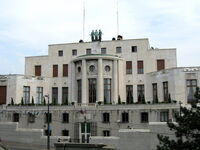
East Heaven Embassy in Savoy, Aquitania
The East Heaven Embassy, located in Savoy, was considered the most prestigious building in the Ministry of Foreign Affairs to serve in. Erected in 2979, only during Aquitania's civil war was the embassy ever in any danger. By royal decree, its ambassador had to be a member of the Royal Clan or its cadet branches, employ locals to assist in the city's economy, and be defended by members of the Bhanda Rónaofa (Sacred Band) in addition to an infantry regiment. It was heavily damaged during the 3052 earthquake and flood that devasted Savoy, and with the assistance of Aquitania, was rebuilt and restored to its former glory.
- Embassy Status: active
- Ambassador: Princess Agrais na Colliete, Duchess of Oberkollern
- Deputy Chief of Mission: Jarl Bridgette Silverhand
- Employs 60 diplomats
- Protected by 40 members of the Diplomatic Guards
- Protected by the 34th Infantry Regiment, Company A (totalling 100 soldiers and 12 officers)
- Protect by 10 Knights of Clan na Colliete in traditional armour and arms
- Protected by 5th Company, Bhanda Rónaofa (totalling 100 guardsmen and 12 officers)
- Interior defenses are standby at night, outer defenses are offline.
- Locals are employed for general housekeeping and basic secretarial duities.
- Upon inspection, locals can enter embassy grounds and building, but can not enter restricted areas
Active Embassy of Poblacht na Ard Ghlais
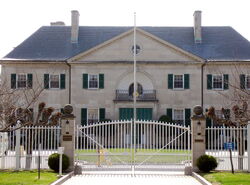
East Heaven's Ardglass Embassy
This embassy, located in the capital city of Saoirsi Buaic, was officially established in 3050 and suffered some damage during the Union Civil War. After the war, it became the headquarters for the East Heaven's Ríoga Gharda Aer, which consisted of two mobile interceptor wings. Aside from this, it was still considered a a great honor to be assigned to this embassy, and most ambassadors had to have a great deal of experience to be assigned here.
- Embassy Status: active
- Ambassador: Raoul na Mindelan
- Employs 28 diplomats
- Protected by 80 members of the Diplomatic Guards
- Protected by the 158th Infantry Regiment Company A (totalling 100 soldiers and 12 officers)
- Interior defenses are active at night, outer defenses are active
- Ministry of Foreign Affairs members are employed for general housekeeping and basic secretarial duities.
- Upon close inspection, locals can enter embassy grounds and building, but can not enter restricted areas
Active Embassy of Ríocht na Constantine
- Embassy Status: Active
- Ambassador: pending
- Employs 28 diplomats
- Protected by 20 members of the Diplomatic Guards
- Protected by the 43nd Infantry Regiment (totalling 1000 soldiers and 100 officers)
- Interior defenses are active at night, outer defenses are on stand-by
- Locals are employed for general housekeeping and basic secretarial duities.
- Upon inspection, locals can enter embassy grounds and building, but can not enter restricted areas
Active Embassy of Aontas Sféar Impiriúil na Gaia
- Embassy Status: Active
- Ambassador: Joan d'Alecon
- Employs 30 diplomats
- Protected by 24 members of the Diplomatic Guards
- Protected by the 18th Infantry Regiment, Company A (totalling 100 soldiers and 12 officers)
- Interior defenses are active at night, outer defenses are offline
- Locals are employed for general housekeeping and basic secretarial duities.
- Upon inspection, locals can enter embassy grounds and building, but can not enter restricted areas
Active Embassy of Tá Poblacht na Dyna
- Embassy Status: pending
Active Embassy of Aontas na Uilechoiteann
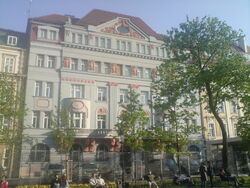
East Heaven Embassy in Universal
East Heaven's embassy, located in Universal, is one of the few embassy that has a special interest section. Aside for East Heaven interests, it also assist with Aquitanian interests as well.
- Embassy Status: Active
- Ambassador: Thane Rognar Stormblower
- Employs 30 diplomats
- Protected by 24 members of the Diplomatic Guards
- Protected by the 64th Infantry Regiment, Company A (totalling 100 soldiers and 12 officers)
- Interior defenses are active at night, outer defenses are offline
- Locals are employed for general housekeeping and basic secretarial duities.
- Upon inspection, locals can enter embassy grounds and building, but can not enter restricted areas
Active Embassy of Impireacht na Metudela
- Embassy Status: Active
- Ambassador: pending
- Employs 30 diplomats
- Protected by 24 members of the Diplomatic Guards
- Protected by the 170th Infantry Regiment, Company A (totalling 100 soldiers and 12 officers)
- Interior defenses are active at night, outer defenses are offline
- Locals are employed for general housekeeping and basic secretarial duities.
- Upon inspection, locals can enter embassy grounds and building, but can not enter restricted areas
Recent News[]
Grand Marshal Mitsumi noh Kasemioji, with the approval of Sacred Princess Mint na Colliete, has ordered the mobilization of the Royal Hermantine Corps and the Acacia Dragoons of El Nido to South Kronia to support the Lusitanian forces assembling there. The newly commissioned aircraft carrier EHS Tallisibeth and the heavy command cruiser EHS Aigaion have been dispatch to support naval and marine operations in the area.




























